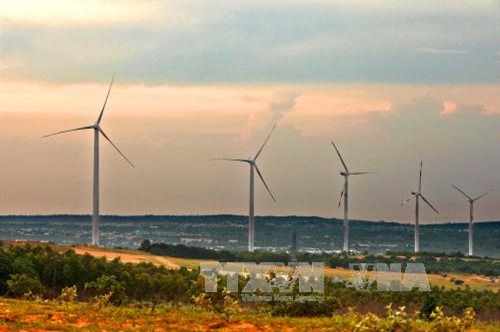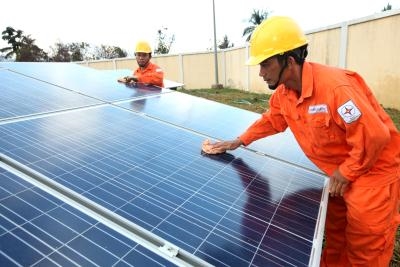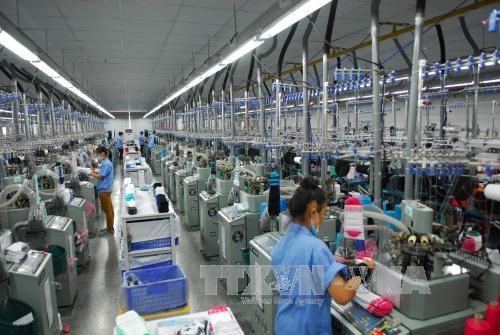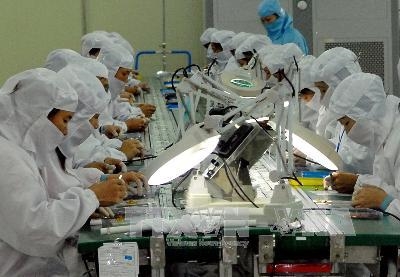>>Legal documents issued from November 23 thru 29
By 2030, most households will have access to modern, sustainable and reliable energy services at reasonable electricity and energy sale prices, according to Prime Minister Decision No. 2068/QD-TTg of November 25, approving Vietnam’s strategy for renewable energy development through 2020, with a vision toward 2050.
 |
| A system of wind turbines in Tuy Phong district, BinhThuan province _ Photo: Trong Dat/VNA |
Under the strategy, hydropower development will contribute to local socio-economic development and power supply and help ensure power supply safety, and must be in line with local master plans for development of small- and medium-sized hydropower plants based on adequate assessment of environmental impacts. Hydropower generators will supply some 90 billion kWh by 2020 and 96 billion kWh by 2030.
The strategy also notes that biomass energy will be prioritized for use in electricity generation, while bio-gas and biomass pellets will be directly used as fuel and liquid bio-fuel.
It also sets the goal of using 50, 60 or 70 percent of industrial and agricultural crop waste for the energy production purpose by 2020, 2030 or 2050, respectively, from roughly 45 percent in 2015.
Solar power generation will be developed in a bid to supply power to the most remote areas across the country. The total output of solar power will be raised to 1.4 billion kWh by 2020, accounting for 0.5 percent of the total power output, and to 35.4 billion kWh, making up 6 percent of the total power output, by 2030. By 2050, solar power will account for 20 percent of the total power supply or 210 billion kWh.
Additionally, wind power will be developed on the mainland from now to 2030. The total output of wind power is expected to hit 2.5 billion kWh by 2020, representing 1 percent of the total power output; 16 billion kWh or 2.7 percent by 2030; and 53 billion kWh, or 5 percent by 2050; respectively.- (VLLF)








